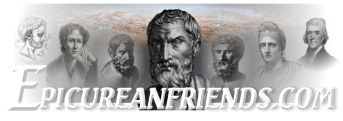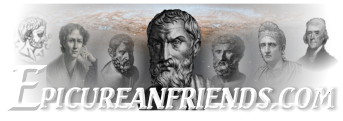I'm also skeptical whether Epicurus would have had so prominent a spot right down front if we take the traditional attribution.
That's another angle on this to consider. Which position is more "prominent"? The one down front with the pudgy wreathed figure, or the position located very close to the central figures of the fresco (even if somewhat obscured)?

